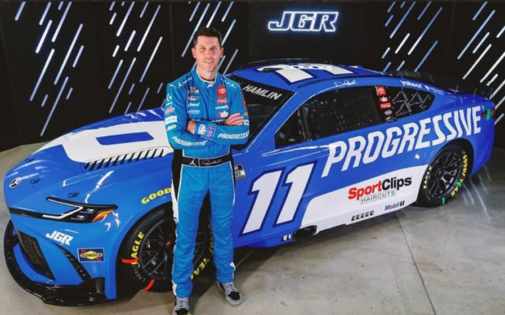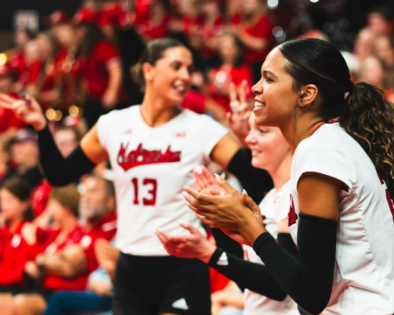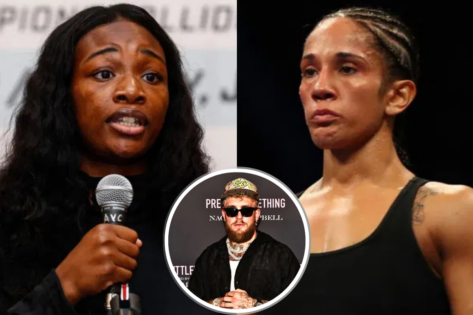As Denny Hamlin wheeled his Carl Edwards-inspired Sport Clips Toyota into Victory Lane at Darlington last weekend, the celebrations masked a growing divide in NASCAR’s paddock. While Hamlin’s throwback livery honored his former teammate in perfect fashion en route to his 56th career win, half the field arrived in standard paint schemes—a stark contrast to the tradition started in 2015. Behind the scenes, a quiet battle has been brewing between nostalgia and financial reality, with Darlington’s hallowed “Throwback Weekend” seemingly losing its grip on the sport’s imagination.
The absence of tribute liveries on 19 cars didn’t go unnoticed by fans, especially after the 2020 Cup Series champion Chase Elliott candidly admitted he thought the concept had “lost its luster” years ago. But Hamlin, fresh off back-to-back victories, stepped forward with a reality check that defends those teams who appeared to snub tradition, revealing an uncomfortable truth about modern NASCAR economics.
“I hear both sides of the argument,” Hamlin explained on his “Actions Detrimental” podcast with co-host Jared Allen. “It’s tough to keep the enthusiasm with it, and I think it has lost enthusiasm.” But rather than simply agreeing with Elliott’s assessment, Hamlin dug deeper into the business mechanics that are slowly eroding one of NASCAR’s most beloved traditions.
“The world has changed,” Hamlin continued, pinpointing the fundamental shift in NASCAR’s economic structure. “We don’t have sponsors in our sport now that are on these cars for 20-some races. When you’ve got sponsors on the car for three, four races, they’re not going to give up one of their races to change their logo, change their colors, change their brand. You’re not giving them value doing that.”
The recent trends back up Hamlin’s analysis. And Hamlin knows the struggle of bringing in sponsors. At the end of 2024, FedEx left the sport, ending its long-standing partnership with Hamlin’s team. While teams like Joe Gibbs Racing managed to coordinate memorable throwbacks, RFK Racing and 23XI Racing were notably absent from the festivities. It’s not a matter of disrespect for tradition—it’s simple economics. As NASCAR Senior Vice President of Competition, Scott Miller acknowledged last year, “There’s a cost to doing it right. And some teams just don’t have the flexibility, especially with how many sponsors they’re managing now.”
Hamlin’s own throwback to Carl Edwards worked because Sport Clips has been his long-time partner at Darlington. “We were one of the unique teams that was able to kind of piece it together where it all made sense, and it worked,” Hamlin explained. “But that’s really, really hard to do.”
Brad Keselowski’s passionate defense of the tradition highlights what’s at stake. After visiting the merchandise hauler and witnessing fans in vintage gear, he argued that “Throwback weekend is much bigger than paint schemes. This weekend connects new and old fans to our sport’s history in multiple meaningful ways for everyone to enjoy.” Similarly, Kyle Busch emphasized that the weekend isn’t about the drivers but about fan engagement: “When I look at fan reception, I feel like the fans really love it… It’s for the people that are in the grandstands and for their pure joy in just seeing some of the older, cool schemes that come back to life.”
Even NASCAR President Steve Phelps has acknowledged the challenge, suggesting possible format changes might be necessary: “We’ve talked about ways to re-energize it. We don’t want to lose what made it special just because the logistics have gotten harder.”
As Hamlin succinctly puts it, “When it’s a sponsor-driven sport, sponsors are going to drive what you see. That’s the model that we’ve got, and we just have to accept it.” The victory achieved with this nostalgic paint scheme points toward becoming a rare occurrence as NASCAR continues to subject its traditions to business considerations.
The Cultural Significance of NASCAR’s Throwback Tradition
This tension between celebrating NASCAR’s rich heritage and satisfying modern sponsor demands isn’t new, but it’s intensifying. When Darlington first launched Throwback Weekend a decade ago, nearly every car sported vintage designs. The event represented NASCAR’s conscious effort to bridge generations through living history, returning the Southern 500 to its traditional Labor Day weekend slot and creating cultural touchstones that reminded fans why they fell in love with stock car racing in the first place.
During the last ten years the weekend transformation echoed NASCAR’s strategic balance to uphold tradition together with commercial adaptation. Labor Day became a spring date after schedule changes at Darlington Raceway however the special moments including the broadcast return of Ken Squier and Ned Jarrett and Richard Petty’s black flag defiance in his blue No. 43 car united different generations of NASCAR fans. The sporting traditions in NASCAR have preserved their essential role in the sport’s foundation despite NASCAR’s innovation of playoff systems and next-generation race vehicles.
The main purpose of Throwback Weekend demonstrate NASCAR’s fundamental power through its deep histories and personalities instead of racing competition alone. Brad Keselowski won the race with a Rusty Wallace homage to a Miller-scheme machine in 2018 and thus added another page to the ongoing NASCAR story. The drivers Keselowski and Busch actively defend the tradition due to the storytelling potential while Hamlin admits NASCAR follows a sponsor-driven business model, “When it’s a sponsor-driven sport, sponsors are going to drive what you see. That’s the model that we’ve got, and we just have to accept it.” His throwback scheme victory looks like it will turn into a rare occurrence in NASCAR since today’s sport demands that every decision aligns with financial expectations.
The post Denny Hamlin Comes to the NASCAR Driver’s Defense by Condemning Darlington’s Verdict appeared first on EssentiallySports.



